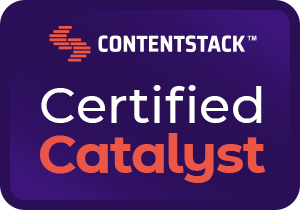AI and Software: The New Frontiers in the Fight Against Climate Change
2023-10-20
AI and Software: The New Frontiers in the Fight Against Climate Change
The climate crisis is one of the most pressing issues of our time. With sea levels rising, temperatures increasing, and natural disasters becoming more frequent, the need for solutions has never been greater. Enter the realm of Artificial Intelligence (AI) and software – technologies that have the potential to revolutionize our approach to environmental sustainability.
How can AI Help in the Fight Against Climate Change?
Artificial Intelligence offers a unique advantage in the realm of climate solutions. It can process vast amounts of data, recognize patterns that might be invisible to the human eye, and make predictions with impressive accuracy. Some key areas where AI is making strides include:
Forecasting & Modeling: AI can improve the accuracy of climate models, making predictions about future changes more reliable. This aids policymakers in making informed decisions.
Monitoring Deforestation: Satellite imagery, when processed by AI, can monitor and predict areas at risk of deforestation. Platforms like Global Forest Watch utilize such technologies to offer real-time monitoring of forests.
Energy Consumption: AI can optimize energy use in buildings, transportation, and industries. Google’s DeepMind, for instance, reduced the energy used for cooling its data centers by 40% using its AI algorithms.
Software's Role in Environmental Sustainability
While AI provides the computational muscle, software serves as the framework where these solutions are implemented. Here are some tangible examples:
Carbon Footprint Tracking: Apps like JouleBug help individuals track and reduce their carbon footprint by promoting sustainable habits.
Supply Chain Optimization: Companies are increasingly using software to track the carbon footprint of their supply chains. Platforms like SourceMap offer businesses tools to track and reduce emissions throughout their supply chain.
Renewable Energy Integration: Softwares like Autogrid assist in the seamless integration of renewable energy sources into the grid by predicting energy supply and demand.
Real Examples: AI and Software Initiatives Making a Difference
Project Drawdown: A global initiative that leverages research, modeling, and tech solutions, including AI, to address the climate crisis. They've listed a range of solutions, from food to energy, that can collectively help "draw down" atmospheric carbon dioxide.
SunPower's AI-backed Solar Solutions: By using machine learning to forecast weather and optimize energy consumption, SunPower enhances the efficiency of solar panels, making renewable energy more accessible.
Watson Decision Platform for Agriculture: IBM's solution uses AI to integrate weather data, satellite imagery, and IoT to offer farmers insights on water usage, crop health, and more. This helps in sustainable farming practices and reduces resource wastage.
The Road Ahead
With AI and software playing a pivotal role, there's hope for a sustainable future. However, while technology offers promising solutions, collaboration is key. Governments, businesses, and individuals must work together, leveraging these tools for the greater good.
Moreover, ethics should guide the development and deployment of AI. We must ensure that while harnessing the power of AI for the environment, we don't inadvertently create new problems, like job displacements or increased e-waste.
Lastly, individuals can play their part. By supporting eco-friendly businesses, using sustainability apps, and staying informed about the latest in tech and sustainability, we can collectively make a difference.
Conclusion
The fight against climate change is multifaceted, and while the challenges are immense, the solutions are many. With the advent of AI and software geared towards environmental sustainability, we have more tools in our arsenal than ever before. These technologies, combined with a collaborative global approach, can pave the way for a brighter, greener future.





